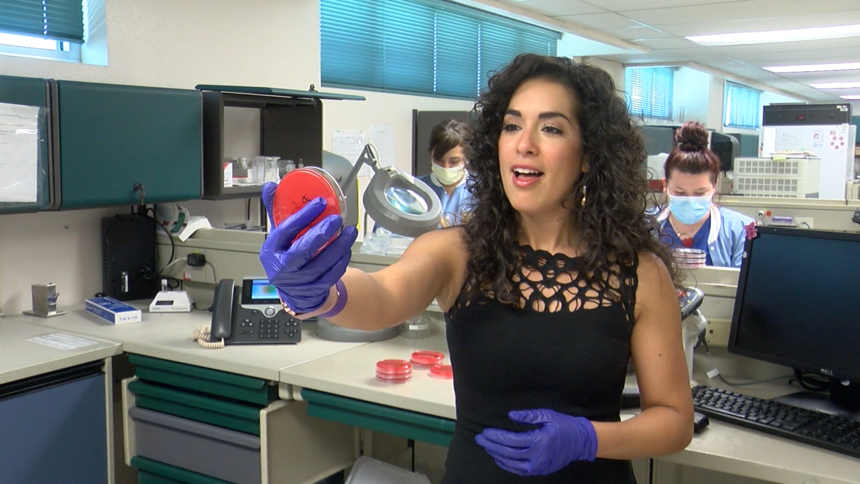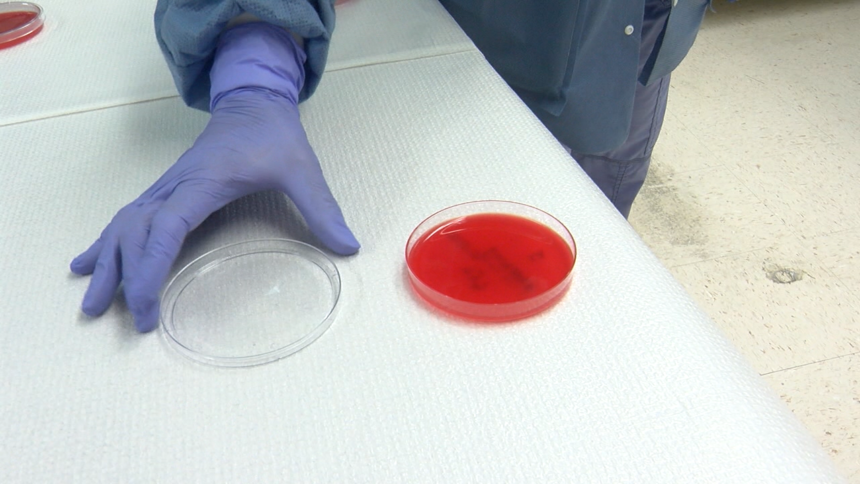The science behind masks: UMC experiment shows face covering prevents droplet spread


EL PASO, Texas -- While the politics behind face coverings is divisive, most medical experts agree the science behind masks is clear.
ABC-7 put masks to the test with an experiment in conjunction with University Medical Center of El Paso.
"We're going to do the experiment without the mask to see what we capture on our augur, and then we will do it with a mask to make sure that it is helping, as far as spreading any germs or viruses," said Lourdes Aguilar, the microbiology lab supervisor at UMC.
Aguilar said the petri dishes with the augur would be placed two and six feet away from ABC-7 anchor Stephanie Valle.
"The two feet is what (distance) we would normally have (between people) without the pandemic, and the six feet is what they're saying we should (stay) so as not to get infected by aerosols or droplets," Aguilar said.
For the experiment, Aguilar asked Valle to remove her mask and hold a dish about two feet away from her face and talk. She repeated the experiment at two feet while sneezing and coughing, then repeating the three exercises at two feet with a mask covering her mouth and nose.
The same experiment was done at six feet, with and without a mask.
The dishes were left in the lab for 24 hours.
The following day, Aguilar showed ABC-7 the petri dishes. The three that were held two feet away while talking, sneezing and coughing unmasked all contained bacterial growth.
"This is usually in everybody's mouth and that's very, very normal," Aguilar said. "And take into consideration that these were all fake. So when you actually sneeze because you have something in there, it's going to be a lot stronger and it's going to have a lot more stuff coming out."
Aguilar reiterated that the experiment would only demonstrate the growth of bacteria because viruses don't grow on the augur. But she said viruses -- which are tinier -- travel the same way: through aerosols.
The three dishes held at two feet while wearing a mask had no growth.
"The mask works. That's very important," Aguilar said, adding, "Not surprised, because that's the whole purpose of wearing a mask."
There was no trace of cough or sneeze at six feet, both with and without a mask.
When asked if she found the result of that particular experiment encouraging, Aguilar said, "I would say it's encouraging, but still wear a mask. Especially if you are in a large group and you're six feet apart, you still want to wear a mask." Her concern is that someone not in the group who happens to be closer than six feet away could still spread aerosols if unmasked.
The message Aguilar wanted to emphasize is that sick or not, close or far, everyone should keep their face covered.
"I want to make sure we stop the spread of the Covid virus," she said. "And if I do my part and everybody does their part, we will start to see those numbers decrease."
